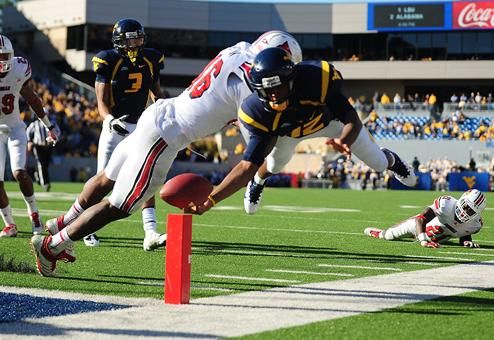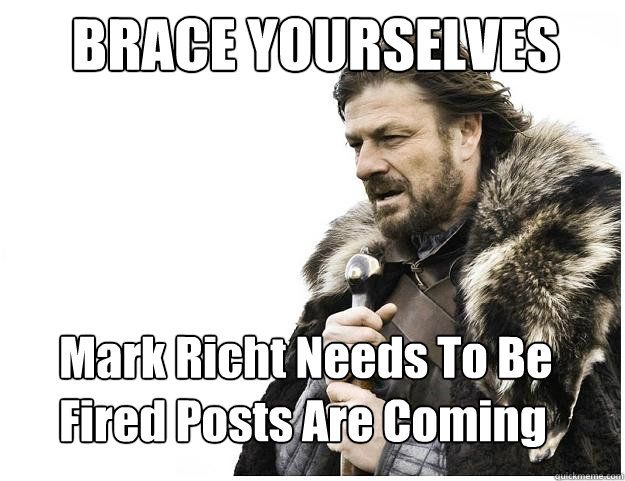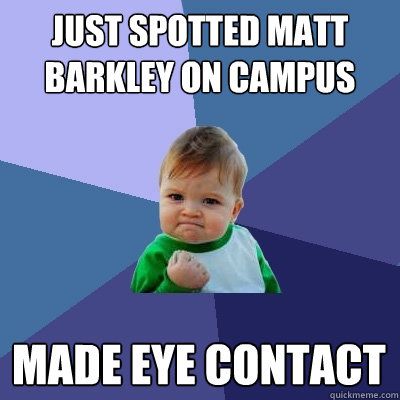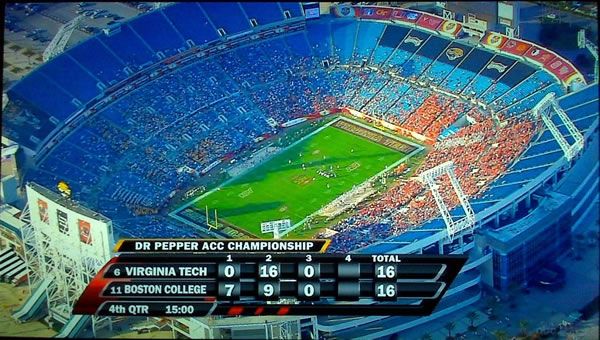Bears camp begins this week, so it's time for my annual look at the camp roster to try and shake out what the Bears will look like come opening day and what we might expect from those 53 guys. Today we start with the offense.
A brief recap: when we last left our heroes they were grinding out a meaningless season finale win over Minnesota that only resulted in Brian Urlacher getting injured on a Hail Mary...wait, Hail Mary......CHIEFS GAME...fuck...Chiefs...AFC West...TEBOW...MARION BARBER. CALEB HANIE. GAHHHHH. Why is there all this blood everywhere? Who put this dead horse in my bed? OH MY GOD, THAT'S NO HORSE, IT'S JOHN ELWAY...*wakes up in cold sweat* Jesus. Okay, where was I?
Oh yes, the Bears ended last season at 8-8 following an excellent 7-3 start and a horrifing 1-5 finish. Since then they've replaced the GM, overturned the talent at the offensive skill positions, took care of several headaches by re-signing Lance Briggs and Matt Forte, and now enter training camp free of controversy and full of optimism. This should be good. Let's see who gets to have fun in Bourbonnais over the next month:
*- New to team.
QUARTERBACKS: #6 Jay Cutler, #2 Jason Campbell*, #12 Josh McCown, #4 Matt Blanchard*
No surprises expected here, of course. Cutler will start so long as he stays healthy, which will hopefully be all 16 games, and the franchise goes as he goes. Even ESPN has come around to the idea that they were wrong about him, since the addition of actual talent on offense means Jay will finally put up numbers they can't ignore. This will be his best year yet.
Jason Campbell, not long ago, was the type of guy Bears fans would have worshipped: slightly above average. He's more than capable of keeping the ship upright if Cutler goes down again. Ideally you never have to use him, but even if the exact same scenario as last year should happen again (Cutler out for 5-6 weeks, team simply needs to go .500 to keep playoff hopes alive) the Bears are in an infinitely better situation than they were a year ago thanks to Jason.
McCown makes a lot of sense as the third stringer. Considering the team will likely only get to him if the offensive line is so bad that it gets both Cutler and Campbell knocked out, it's not a bad idea to have a guy who can run for his life back there.
Matt Blanchard went to the University of Wisconsin-Whitewater. I hope he enjoys his two week break from working as a kayaking instructor, which I assume is the only degree available at the University of Wisconsin-Whitewater.
Obviously the depth chart here is set and Blanchard's just a camp arm. Overall this is the best depth chart the Bears have had at QB since Johnny Lujack and Sid Luckman were both on the roster. Hopefully they don't need it, but it's nice to know it's there.
HALFBACKS: #22 Matt Forte, #29 Michael Bush*, #32 Kahlil Bell, #25 Armando Allen, #38 Lorenzo Booker*, #45 Harvey Unga
Forte and Bush are locks and will get about 90% of the touches. Forte is the best runningback the Bears have had in my lifetime (sorry, Neal Anderson and Thomas Jones), and I'm glad he's been extended. Bush is attempt #3 at finding a highly paid complement to Forte. Marion Barber, statistically, wasn't bad, but was oft-injured and fell out of favor after the Denver game. Bush should easily exceed Barber's production and should outproduce Chester Taylor's 2010 season somewhere around the third preseason game.
Kahlil Bell was tendered as a restricted free agent, and should make the roster as the #3 back, but he may have some competition as the Bears signed veteran Lorenzo Booker last week. Booker has some more experience on special teams than Bell, and the Bears may want to go cheaper at the #3 HB spot since they've invested so much in Forte and Bush. Bell himself may want an opportunity to earn more carries on a team with a less crowded depth chart.
I don't expect Armando Allen to make the roster. that's really all I have to say about him. I forgot all about Harvey Unga, who the Bears took in the supplemental draft in 2010 and who has now been injured or dismissed for personal reasons for two seasons. He'll be cut as well.
FULLBACKS: #44 Tyler Clutts
Clutts is overrated by meatballs who were just happy to have a fullback again, but it looks like he's here to stay. Oh well. At least we'll get more horrible puns every time another checkdown pass bounces off of his stone hands.
WIDE RECEIVERS: #15 Brandon Marshall*, #17 Alshon Jeffery*, #80 Earl Bennett, #23 Devin Hester, #14 Eric Weems*, #11 Devin Thomas*, #13 Johnny Knox, #18 Dane Sanzenbacher, #81 Terrien Crump*, #82 Britten Golden*, #19 Joseph Anderson*, #83 Chris Summers*
This is the most vastly upgraded unit on the Bears roster, and maybe the most improved receiving corps in the NFL.
The top four are clear: Marshall is the big, game-changing receiver the Bears haven't had, well, ever. Jeffery has the potential to be Brandon Marshall. The BBE, who will hopefully stay healthy this year, is an outstanding slot/possession guy who can also play outside the hashes opposite of Marshall when the Bears stick Hester in the slot to work him deep (something they'll do more this year than they ever have). Hester is now a role-player, something he was always meant to be.
The real question comes after those four. How many receivers will the Bears keep? Last year they kept six, the first time in the Lovie Era where they've kept more than five. They'll probably keep six again this year as Eric Weems is a lock for the roster as well, but probably won't see any reps at wide receiver since he's simply a poor man's Devin Hester.
So who is the sixth man? Knox is easily taken care of, as they're not going to throw him out there before he's 100% healthy and they may not want him anymore as it is. He'll likely hit the injured reserve, or maybe the PUP list, and the Bears will make their decision on whether to cut or keep him after he's in playing shape again.
The camp bodies don't stand a chance, so ignore Crump, Golden, Anderson, and Summers, even if Crump has an awesome name.
It all boils down to a battle between Devin Thomas and Sanzenfucker for the last roster spot. Thomas is a 6'2, 221 former second round pick who may have some untapped potential on offense and has played very well on special teams in the NFL. Sanzenfucker is a roughly 4'8", 97 lb undrafted schmuck who didn't make an impact on special teams last year and only made the roster as Martz's little toy. He got some playing time when Bennett was hurt and committed the cardinal sin of white wide receiverdom by dropping six passes. My point, basically, is Sanzenfucker is gone and I will dance and bathe in the meatball asshurt the day he is cut. Welcome to the Bears, Devin Thomas!
TIGHT ENDS:#87 Kellen Davis, #89 Matt Spaeth, #88 Evan Rodriguez*, #86 Kyle Adams, #84 Draylen Ross*, #85 Brandon Venson*
In Ron Turner's last two years the Bears had one of the deepest tight end corps in the NFL, with Greg Olsen and the vastly underrated Dez Clark combining for nearly 1000 yds each year and Kellen Davis as the third string TE. After two years of transition under Martz, the Bears tight ends will once more be featured as receivers between the twenties.
Kellen Davis will start, and I'm confident he'll perform adequately in a much bigger role this year. I'd think 400-500 yds receiving and anywhere from 5-8 touchdowns would make sense. He'll lose some reps on third down to Rodriguez, who will also play in two tight end sets. I'd expect Rodriguez to chip in somewhere around 400 or so yards this year as well before earning more reps in year two. Spaeth may get some reps at fullback and is solely a blocking specialist. He may fit into a role similar to that of Jim Kleinsasser in Minnesota during Tice's Vikings years.
I don't think the Bears will break camp with more than 3 tight ends this year, so expect Kyle Adams to continue bouncing back and forth between the practice squad, the waiver wire, and the roster as he did last year. Draylen Ross and Brandon Venson will most likely never be heard from again.
OFFENSIVE TACKLES: #72 Gabe Carimi, #73 J'Marcus Webb, #74 Chris Williams, #75 AJ Greene*, #76 Brandon Cory*, #79 Tyler Hendrickson*
Carimi is the key to damn near everything this year. If he stays healthy and plays as well as most believe him capable off, the entire line will stabilize. If the line is stable, there'll be very little that can stop the Bears offense this year thanks to their additions at wide receiver and runningback. If Carimi goes down again? Let's just not discuss it. For the record, I think he'll be a great player.
Left tackle is still J'Marcus Webb's job to lose. Unfortunately, I think he's more than capable of losing it to Chris Williams. Williams was really coming along at guard before he went down, so moving him back to tackle is somewhat irritating. It's hard to say Williams was a bust at LT, though, since he started just seven games there between 09-10 before he was injured and later moved to guard. Whoever wins will benefit from a coordinator that places less emphasis on the left tackle as an isolated blocker. I think the Bears will make something work with these two this year and will avoid the disasters of the past, but I think a true standout will be their top priority next offseason.
The Bears usually carry only three tackles, so I'd expect Greene, Cory, and Hendrickson all to get cut. One of them will make their way to the practice squad of course.
OFFENSIVE GUARDS/CENTERS: #63 Roberto Garza, #67 Chris Spencer, #60 Lance Louis, #70 Edwin Williams, #62 Chilo Rachal, #78 James Brown, #64 Ricky Henry, #68 Nick Pieschel.
Garza and Carimi are the only two players locked into starting jobs on the offensive line at the moment. I think Spencer and Louis are the likely starters at guard, which makes sense. Louis has always played well at guard but has suffered from injuries and a move to right tackle forced by the awfulness of Frank Omiyale. While Louis was wildly inconsistent on the outside, he's earned the right to start on the interior. Spencer played very well last year and also deserves to begin the season as a starter.
The main backup should be Rachal, who is a dominating run blocker (the best run-blocking guard in all of football in 2010 according to ProFootballFocus), but extremely inconsistent in pass protection. If Tice can tap the potential that made Rachal a 2nd round pick in 2008 I'd expect him to force his way into the lineup. Edwin Williams played extremely well last year after Chris Williams went down, so there's no reason to expect him not to make the roster. I'd also not be surprised if the Bears go younger soon and drop Garza in favor of shifting Spencer to center and making room for Rachal or Eddie at guard. Either way, the Bears will be as capable on the interior as they were last year when they paved the way for over 2,000 rushing yards.
Henry and Pieschel are just guys, but James Brown is highly intriguing prospect from Troy who was at one point a potential second-third rounder at tackle. His versatility makes him difficult to cut, as the Bears may not be able to sneak him onto the practice squad. He may make the roster as a backup at both guard and tackle, or the Bears may try their injured reserve redshirt.
If you were keeping track, my expected depth chart on offense is this:
QB: Cutler/Campbell/McCown
HB: Forte/Bush/Bell
FB: Clutts
WR: Marshall/Jeffery/Bennett/Hester/Weems/Thomas
TE: Davis/Spaeth/Rodriguez
LT:Webb/C.Williams
LG:Spencer/E. Williams
C: Garza/Spencer
RG:Louis/Rachal
RT: Carimi/Brown
That's a total of 25 players if they opt to keep Brown on the roster.
As a whole, this offense should, provided the key players stay healthy, be the most productive unit the Bears have fielded since 1995. I probably could have just typed "JAY CUTLER TO BRANDON MARSHALL, TOUCHDOWN BEARS" and your pants would have exploded. I know mine just did.
Go Bears.








